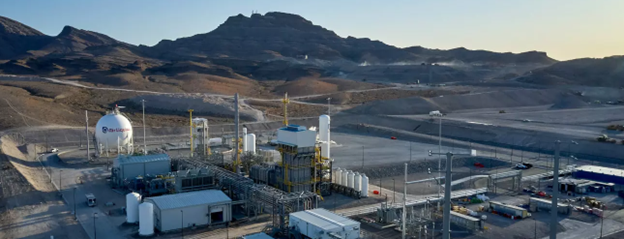
Current green hydrogen production and storage facility in Apex, Nev.
To reduce the detrimental effects climate change poses to our state, electricity producers are shifting away from using fossil fuel-based sources to clean, renewable sources such as the sun and wind.
Last year, we prepared two statewide draft programmatic environmental impact statements identifying the likely adverse effects that utility-scale solar and onshore wind energy facilities pose to the environment, and ways to avoid or reduce those impacts.
Green hydrogen offers another pathway for reducing harmful greenhouse gas emissions for hard-to-decarbonize sectors of Washington’s economy—including aviation, heavy-duty transport, and certain industrial activities.
On Jan. 7, we released our draft programmatic environmental impact statement evaluating green hydrogen production and storage facilities. This broad, statewide study examines the probable environmental impacts these types of energy facilities pose in Washington, including approaches to mitigate or offset the impacts.
This draft report is now available for a 30-day public review and comment, ending at 11:59 p.m. on Thursday, Feb. 6. Find more about how to comment on our study or register for an online public hearing on Jan. 23, Jan. 28, or Jan. 30.
Hydrogen fuel holds promise
Hydrogen is an abundant earth element containing a higher level of energy per unit of mass than natural gas or gasoline. Hydrogen can be stored and transported as a gas or liquid and used as a fuel to power ships, planes, and trucks and heat industries, businesses, and homes.
In nature, however, hydrogen is almost always found as a part of another compound such as water or methane. To be useful as a fuel, however, the element must be separated from other compounds into pure hydrogen.
‘Green’ hydrogen power
There are several ways to produce green hydrogen. Our study evaluates four different processes and the potential environmental impacts of each.
One process, called “electrolysis,” uses electricity to split water into hydrogen and oxygen. Water (H20) is placed in an “electrolyzer” consisting of an anode and a cathode separated by a membrane. When an electric current is sent through the electrolyzer, the resulting reaction separates hydrogen and oxygen. Pure hydrogen is then captured as a gas, which can also be stored as a liquid under cold temperatures.
Study designed to help guide planning
Our study is designed to help developers, local and state regulators, Tribes, and the public make informed decisions about siting and operating green hydrogen production and storage facilities in Washington.
The report provides information at three different levels of detail:
- The summary contains a quick overview of our findings
- The main document evaluates potential environmental impacts and mitigation actions
- The appendices contain detailed, technical evaluations of impacted resources
We will submit final environmental impact statements for utility-scale onshore wind and solar energy facilities and green hydrogen production and storage facilities to the Washington Legislature by June 30.

